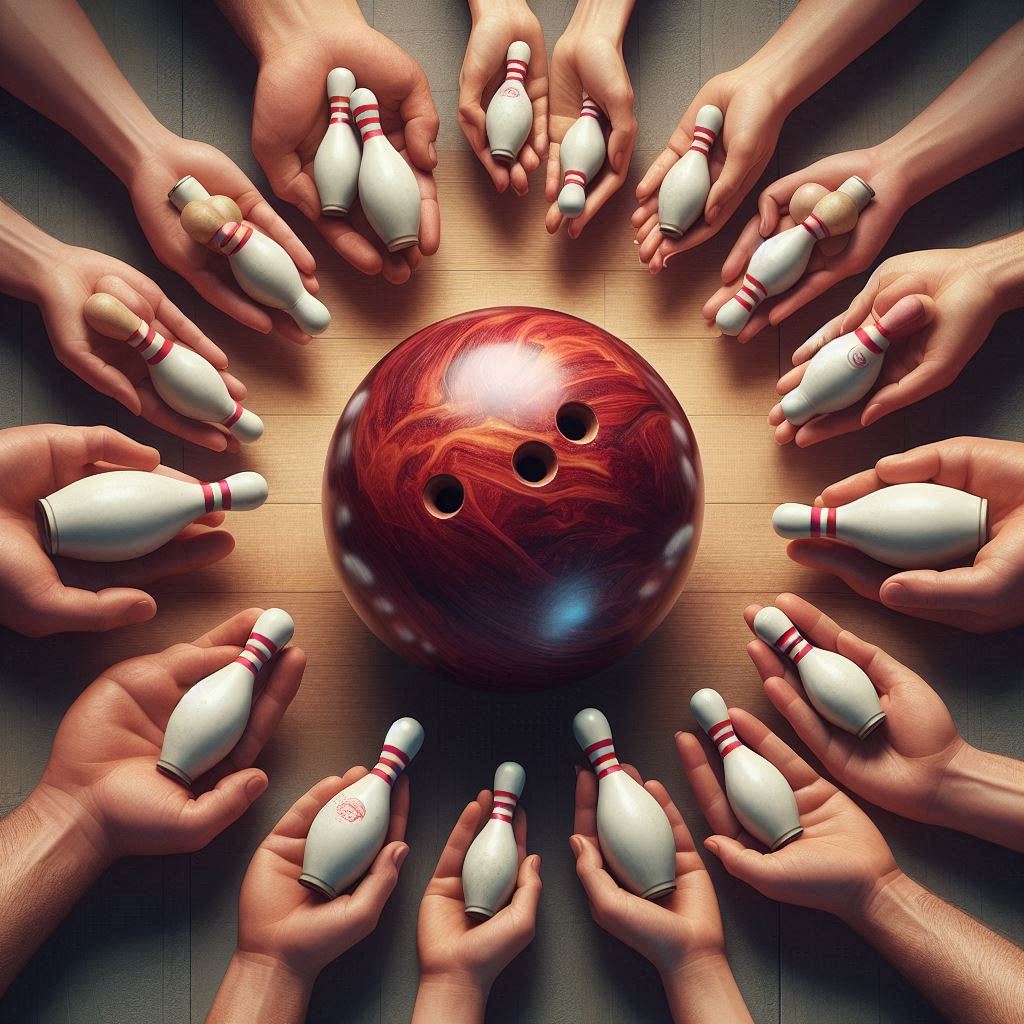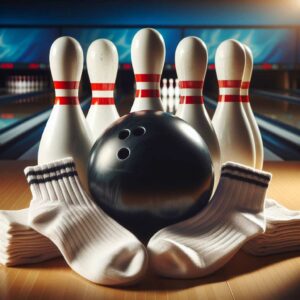Candlepin bowling, a beloved sport that originated in New England, offers a unique and challenging twist on the traditional ten-pin bowling experience. Unlike its bigger counterpart, candlepin bowling utilizes smaller balls and thinner pins, making it a game of precision and finesse. One of the most crucial factors in achieving success on the candlepin lanes is selecting the right ball size. With a range of options available, choosing the perfect fit can significantly impact your performance, control, and overall enjoyment of the game. In this comprehensive guide, we’ll delve into the world of candlepin bowling ball sizes, covering everything from official regulations to expert tips for finding your ideal match.
What is Candlepin Bowling?
Candlepin bowling traces its roots back to the early 20th century in Massachusetts, where it quickly gained popularity as a unique alternative to traditional ten-pin bowling. Unlike the larger balls and pins used in ten-pin bowling, candlepin utilizes smaller balls and thinner, cylindrical pins that are easy to knock down but challenging to clear from the lane in a single roll.
The candlepin bowling ball itself is a distinguishing feature of the game. Measuring between 4.5 and 4.8 inches in diameter and weighing approximately 2.5 pounds, these balls are significantly smaller and lighter than their ten-pin counterparts. The compact size and weight of the candlepin ball demand a delicate touch and precise aim from bowlers, making it a true test of skill and coordination.
Candlepin Bowling Ball Size Regulations
To ensure fair play and consistency across the sport, candlepin bowling is governed by official rules and regulations set by governing bodies, such as the National Candlepin Bowling Association (NCBA) and various regional organizations. These regulations dictate the acceptable size range for candlepin bowling balls, typically falling between 4.5 and 4.8 inches in diameter.
It’s important to note that while the standard size range is well-established, some variations or exceptions may exist in certain leagues or tournaments. For example, some organizations may allow slightly larger or smaller ball sizes to accommodate specific needs or preferences of bowlers. However, adhering to the official regulations is crucial for maintaining a level playing field and ensuring fair competition.
How to Measure Candlepin Bowling Ball Size
Accurate measurement of a candlepin bowling ball’s size is essential for compliance with regulations and optimal performance on the lanes. To measure the diameter of a candlepin ball correctly, you’ll need a reliable measuring tool, such as a caliper or a specialized ball sizing gauge.
Here’s a step-by-step guide to measuring your candlepin bowling ball:
- Ensure the ball is clean and dry, as any debris or moisture can affect the accuracy of the measurement.
- Use a caliper or ball sizing gauge and position it around the widest circumference of the ball.
- Gently close the caliper or gauge until it makes contact with the ball’s surface, taking care not to apply excessive pressure that could distort the measurement.
- Note the diameter measurement displayed on the tool, typically in inches or millimeters.
- Repeat the process several times, taking the average of the measurements for greater accuracy.
Consistent and precise measurement is crucial in candlepin bowling, as even minor variations in ball size can significantly impact grip, release, and overall ball motion on the lane.
Factors to Consider When Choosing a Candlepin Bowling Ball Size
While the official regulations provide a size range, selecting the perfect candlepin bowling ball size is a personalized process that involves several factors. Here are some key considerations to keep in mind:
Hand Size and Grip Comfort: The size of your hand and the length of your fingers play a significant role in determining the most comfortable ball size. A ball that’s too small may cause discomfort or loss of control, while a ball that’s too large can be challenging to grip and release properly.
Bowling Style: Your bowling style, whether straight, hook, or spin, can influence the ideal ball size. For example, bowlers who prefer a straight shot may benefit from a slightly smaller ball for better control, while those who employ a hook or spin technique may prefer a larger ball for generating more revolutions.
Skill Level and Experience: Beginner candlepin bowlers may find a smaller ball easier to control and manage, while more experienced players often prefer a larger ball for increased power and hook potential.
Personal Preference and Feel: Ultimately, the right ball size comes down to personal preference and what feels most comfortable and natural for your individual bowling style and technique. Some bowlers may gravitate towards a particular size based on their experience and preferences.
Ideal Ball Sizes for Different Players
While personal preference plays a significant role, there are general guidelines for recommended candlepin bowling ball sizes based on factors such as age, height, and hand size. Here’s a table to help you find the ideal ball size based on these factors:
Age/Height Hand Size Recommended Ball Size Children (under 12) Small hands 4.5 inches Teens/Adults (5’0″ – 5’6″) Medium hands 4.6 inches Adults (5’7″ – 6’0″) Large hands 4.7 inches Adults (over 6’0″) Extra-large hands 4.8 inches
Keep in mind that these recommendations are general guidelines, and individual preferences and bowling styles may vary. It’s always best to try out different ball sizes and choose the one that feels most comfortable and allows you to perform at your best.
Ball Size and Drilling
Considerations Proper ball drilling and layout play a crucial role in maximizing performance and ensuring a comfortable grip and release. When it comes to candlepin bowling balls, the size of the ball directly impacts the drilling process and finger hole positioning.
Smaller balls generally require a tighter span between the finger holes, as the shorter circumference means the holes need to be closer together for optimal grip and control. Conversely, larger balls may require a wider span to accommodate longer fingers and improve comfort during the swing and release.
Working with a professional ball driller who specializes in candlepin bowling is highly recommended. These experts can analyze your hand size, grip style, and bowling technique to determine the ideal drilling layout for your chosen ball size. They can also advise on the appropriate finger hole sizes and pitches (angles) to ensure a consistent and comfortable fit.
Maintenance and Care
for Candlepin Bowling Balls Proper maintenance and care are essential for keeping your candlepin bowling ball in top condition and preserving its size and performance over time. Here are some tips to help you extend the life of your ball:
Cleaning and Polishing: Regular cleaning and polishing can help maintain the ball’s surface and prevent the buildup of dirt, oil, and other contaminants that can affect its size and performance. Use a gentle ball cleaner and polish specifically designed for bowling balls, following the manufacturer’s instructions.
Storage and Transportation: Protect your candlepin bowling ball by storing it in a cool, dry place away from direct sunlight or extreme temperatures. When transporting the ball, use a suitable ball case or bag to prevent scratches, dents, or warping.
Resurfacing and Re-sizing: Over time, the surface of a candlepin bowling ball may become worn or damaged, affecting its size and performance. In such cases, professional resurfacing or re-sizing services can restore the ball to its original size and condition. Follow the recommendations of your pro shop or ball manufacturer for best practices.
By following these maintenance and care guidelines, you can ensure that your candlepin bowling ball maintains its optimal size and performance for many games to come.
Conclusion:
Choosing the right candlepin bowling ball size is an essential aspect of achieving success and enjoying the game to its fullest. From understanding the official regulations to considering personal factors like hand size and bowling style, this guide has provided you with a comprehensive overview of what it takes to find your perfect ball fit.
Remember, while general guidelines can be helpful, the true key lies in experimenting with different ball sizes and trusting your individual preferences and comfort level. Don’t be afraid to try out a range of options until you find the ball size that not only complies with regulations but also feels like an extension of your arm, allowing you to bowl with precision, control, and confidence.
As you continue your candlepin bowling journey, be sure to keep these tips in mind and seek guidance from experienced players or professionals when needed. With the right ball size and proper maintenance, you’ll be well on your way to mastering this unique and exciting sport.
So, embrace the challenge of candlepin bowling, and let your newfound knowledge of ball sizes guide you towards improved performance and a deeper appreciation for this New England tradition. Happy bowling!





